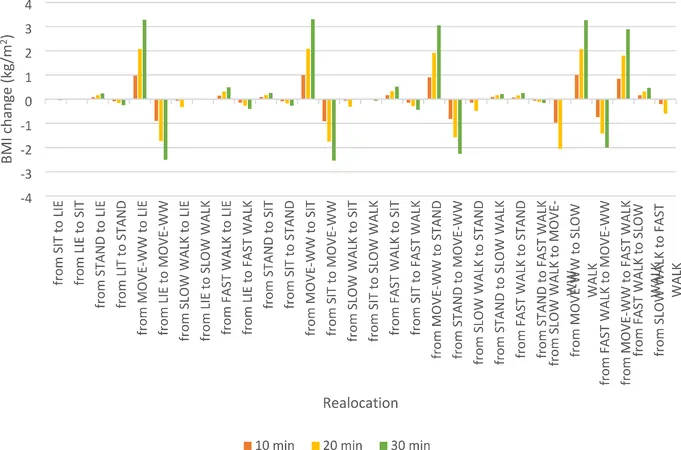
The Hidden Link Between Movement Patterns and Obesity in Seniors: What You Need to Know!
2024-12-28
Author: Sarah
Introduction
The rising epidemic of obesity among older adults is not just a matter of aesthetics—it’s deeply tied to chronic health issues and a lower quality of life. In fact, the common physical activity guidelines seldom account for the specific ways in which older adults use their bodies throughout the day. This groundbreaking study sheds light on the significant relationship between various postures and the risk of obesity among seniors, examining how the time spent lying, sitting, standing, moving, or walking influences body mass index (BMI).
Study Overview
Conducted with 309 participants aged 65 and older in the Czech Republic, this cross-sectional study employed accelerometers to meticulously track the participants’ daily movement behaviors. Evaluating the data through innovative compositional data analysis (CoDA) and isotemporal substitution models, the researchers explored how reallocating time in different activities could affect BMI.
Results Unveiled
Interestingly, younger seniors (around 67 years old) were found to engage in significantly more physical movement than their older counterparts (around 75 years old). The conclusions are astounding: just 30 minutes of reallocated time from movement to inactivity (lying or sitting) could lead to a shocking increase in BMI—up to +3.31 kg/m²! Conversely, replacing downtime with movement could mean a drop of up to -2.54 kg/m² in BMI. For those in the older age group, shifting time from slow walking to sitting resulted in an increase of up to +1.86 kg/m². In contrast, dedicating more time to slow walking while reducing sitting could potentially lower their BMI by -0.95 kg/m².
Secret Solutions for Managing Obesity Risk
These compelling findings emphasize the importance of promoting movement, particularly walking, as a strategy to tackle obesity among older adults. By diminishing sedentary lifestyles—an all-too-common scenario for seniors—we can encourage healthier, low-intensity physical activities tailored specifically to their capabilities. As our society ages, especially with those over 60 projected to double by 2050, addressing these issues becomes not just beneficial, but essential for better health outcomes and longevity.
The Science Behind Posture and Movement
While existing studies have often categorized movement behavior by intensity—differentiating between various levels of physical exertion—it has rarely taken into account how different postures impact energy expenditure. This study provides a refreshing perspective, suggesting that different postures—such as quiet standing—can influence BMI differently from sedentary positions like sitting.
Examining Methodology
The research adhered to rigorous ethical standards, gaining clearance from the Institutional Research Ethics Committee and securing informed consent from participants. The sample included senior citizens recruited through various channels, including senior clubs and geriatric outpatient services. Data quantification was achieved using advanced accelerometers, ensuring precise tracking of bodily movements and effectively capturing the nuances of day-to-day behavioral patterns.
Key Takeaway: The Impact of Movement on Health
While our findings point towards a clear benefit in promoting mobility in older adults, they also come with a note of caution. The connection observed does not imply causation; further longitudinal studies are needed to deepen our understanding. Does walking more indeed lead to lower BMI, or do those with lower BMI naturally gravitate towards more active lifestyles? Either way, this pivotal study offers crucial insights into how simple adjustments in daily habits can vastly improve the health of older adults, serving as an urgent call for action among healthcare providers and policymakers.
Conclusion: What Should Seniors Do?
Older adults should focus on incorporating movement into their daily routines—whether through walking, standing more often, or simply reducing sitting time—to decrease the risk of obesity. Rather than adhering strictly to high-intensity workouts, subtle changes can spark significant health improvements. Get ready, seniors—moving more might just hold the key to better health and longevity! Stay tuned as we continue to explore the deeper implications of mobility and well-being in the aging population!




 Brasil (PT)
Brasil (PT)
 Canada (EN)
Canada (EN)
 Chile (ES)
Chile (ES)
 Česko (CS)
Česko (CS)
 대한민국 (KO)
대한민국 (KO)
 España (ES)
España (ES)
 France (FR)
France (FR)
 Hong Kong (EN)
Hong Kong (EN)
 Italia (IT)
Italia (IT)
 日本 (JA)
日本 (JA)
 Magyarország (HU)
Magyarország (HU)
 Norge (NO)
Norge (NO)
 Polska (PL)
Polska (PL)
 Schweiz (DE)
Schweiz (DE)
 Singapore (EN)
Singapore (EN)
 Sverige (SV)
Sverige (SV)
 Suomi (FI)
Suomi (FI)
 Türkiye (TR)
Türkiye (TR)
 الإمارات العربية المتحدة (AR)
الإمارات العربية المتحدة (AR)